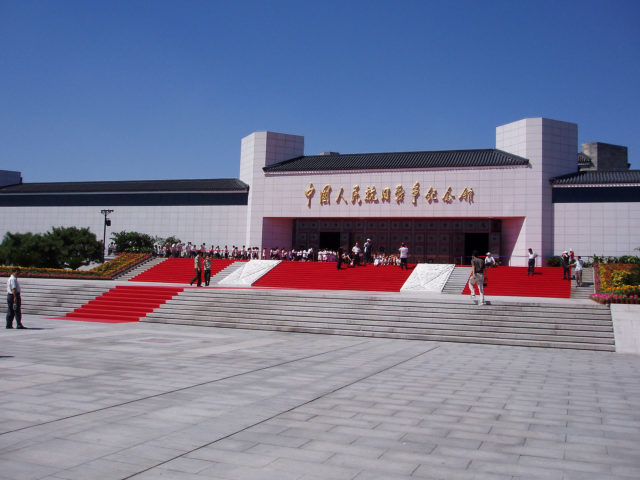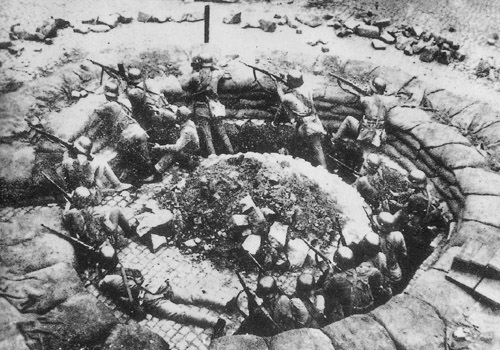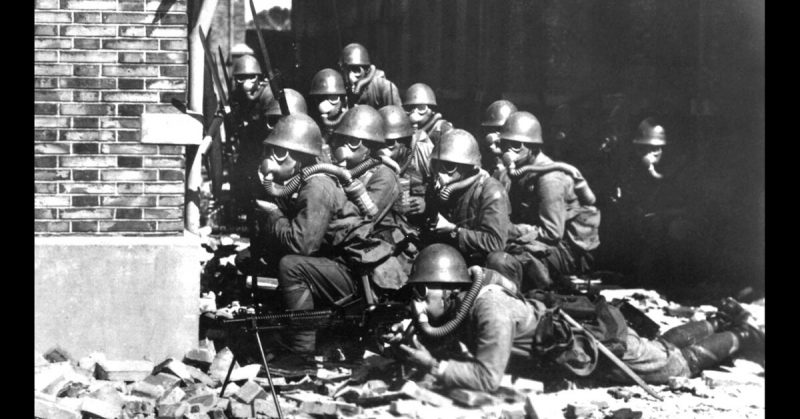In 1937, following the Marco Polo Bridge Incident, China and Japan went to war. It was the beginning of WWII in East Asia, two years before its outbreak in Europe.
From the start, the Japanese had the edge. Aggressive and well-equipped, they countered China’s massive population through the effectiveness of their attacks. For much of the war, Japan occupied Chinese territory.
Why did they have such swift and substantial success?
Japan’s Resource Base
WWI began an expansion of Japan’s material resources and strengthened its military and its economy. By declaring war on Germany, the Japanese seized German assets in China and the Pacific. Those assets provided further resources as well as strategic control of important transport routes.
Korea, already struggling under the yoke of Japanese imperialism, was exploited heavily for its material and economic resources.
In 1931, Lieutenant Colonel Ishiwara Kanji pre-empted the second Sino-Japanese War. Together with fellow Japanese officers, he conquered Manchuria. That part of China was larger than Britain, France, Germany, and Italy combined. There he established Manchukuo, a puppet state that provided Japan with even greater resources while depriving China of them.
Those resources were exploited by a growing industrial wealth which both fed off and fuelled economic growth. In Manchuria, the Japanese military cooperated with industrial giants to create an autocratic society that boosted the strength of the occupiers. Production of such vital war materials as coal, iron, steel, and cement skyrocketed.

Quality of Troops
The Japanese army was a modern and highly professional one. The forces were consistent in their quality and training.
The Chinese army was much less so. Some units, such as the Muslim divisions, were tough and disciplined, inspiring fear in outside observers. Others were far less effective. Szechuan in the southwest provided 250,000 men who were considered ill-trained, undisciplined, and disloyal.
China’s Political Divisions
From its revolution in 1911, China was a deeply divided nation. At first, the great global powers stepped in to try to create stability, shoring up the regime of Yuan Shih-k’ai. The distraction of WWI and its aftermath removed that outside interference. China descended into turmoil.
All-out war in 1927 tore the country apart. Communists and Nationalists faced each other in a struggle that lasted for decades.
The nationalist Chiang Kai-shek was initially successful in consolidating control over much of the country. In his effort to throw off foreign influences, he threatened Japanese interests. Then the war with the Communists reignited, and Japan exploited the situation.
Chinese instability created problems for Japan. It also created opportunities. With China divided, it was harder for that nation to exert its influence diplomatically or to resist invasion. The Nationalists and Communists tried to cooperate against the shared enemy, but in 1941 the two Chinese forces clashed. From then on, they were as busy fighting each other as they were dealing with the Japanese.
Command Problems
Given the quality of national leadership, it is hardly surprising there were problems within the military command.
The Nationalist commander, Chiang Kai-shek’s administration was notoriously corrupt and fickle. When the Americans and British tried to cooperate with him in the later years of the war, their shared plans were repeatedly undermined. Chiang would agree to a strategy then refuse to act until he was given more resources. He would focus attention on his own agenda at the cost of shared purpose. General Joseph Stilwell, representing the Americans, repeatedly clashed with him.
Stilwell’s assessment of the rest of the Chinese leadership was equally harsh. He considered many of the Chinese commanders gutless. He believed that Chiang’s interventions undermined leadership throughout the Army.
Stilwell was prone to harsh assessments, but his view of the Chinese leadership was grounded in an uncomfortable truth. Chiang’s forces lacked the level of professional leadership that was standard in Europe and Japan. Many of the leaders were effectively local warlords, their loyalty, and obedience to Chiang lasting only as long as there was a shared enemy. Theoretically, they had been absorbed into the formal structure of the army. In practice, many retained a sense of independence that undermined coordination and command.

Chinese Equipment
The Chinese military was woefully underequipped for the war they faced.
It was not just a matter of poor weapon choices. China lacked the infrastructure to provide the equipment it needed. There were few weapons factories, and there were even fewer arsenals to collect, store, and distribute weaponry. There was no central system of arms purchasing which would have standardized quality control.
Throughout the war, there was a shortage of rifles. As men picked up captured enemy equipment, the weapons in use became even more varied. That created challenges in providing ammunition and training.
Even in areas where the Chinese had reliable weapons, there were shortages. Their choice of a light machine gun was the highly-regarded Czechoslovakian ZB26, which was both imported and copied within China. The Japanese had three times as many machine guns per division as the Chinese had.
While the Chinese had armored trains, they were short of most other forms of heavy equipment. To begin with, they had only a handful of light tanks and other armored vehicles. By 1941, the whole Chinese Army had only 800 artillery pieces.
With so many challenges, it was easy for the Japanese to gain an edge over the Chinese. What followed was a long fight back that ultimately ended in Japan’s defeat.
Sources:
Nigel Cawthorne (2004), Turning the Tide: Decisive Battles of the Second World War
David Rooney (1999), Military Mavericks: Extraordinary Men of Battle
Conrad Totman (2005), A History of Japan, second edition.
